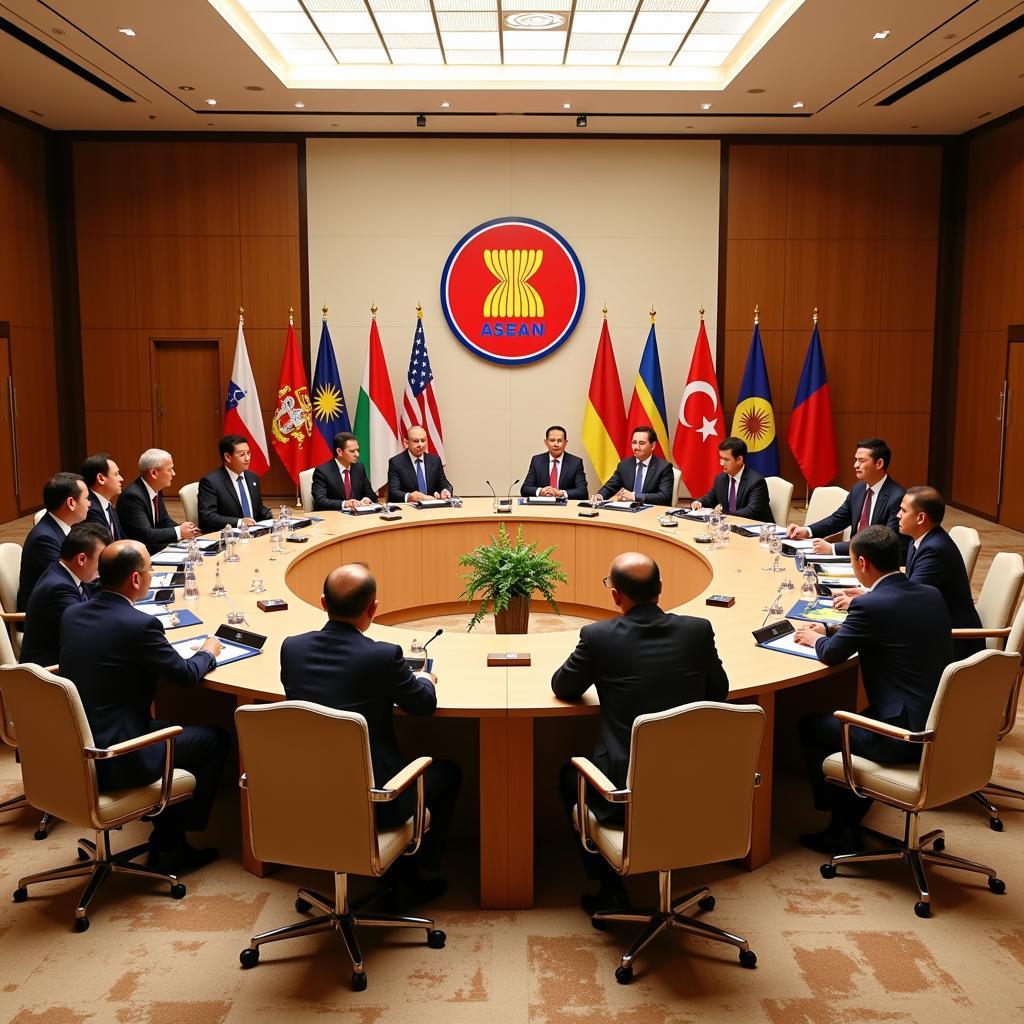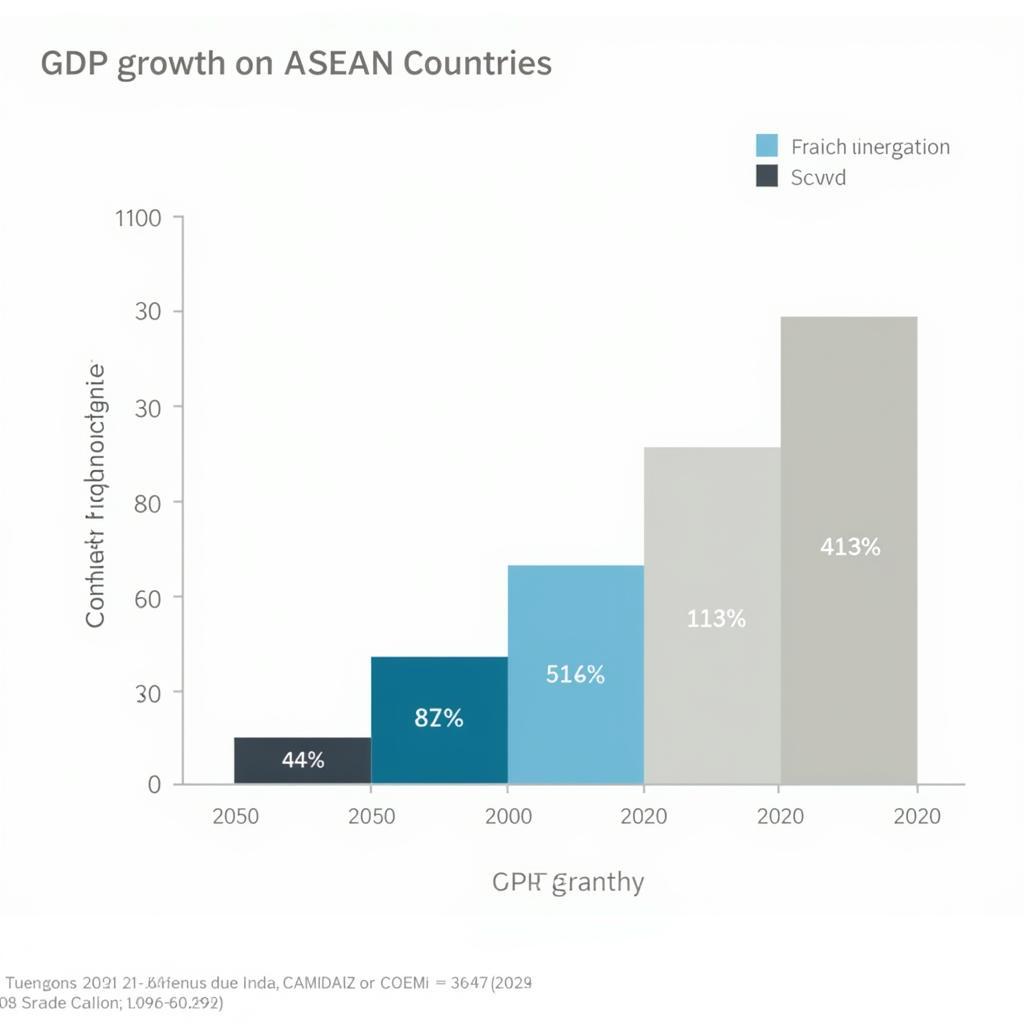The Association of Southeast Asian Nations (ASEAN) is a dynamic region with a rich history, diverse cultures, and a rapidly growing economy. If you’re seeking to understand the ASEAN background, whether for academic research, business ventures, or personal interest, finding comprehensive information is crucial. This guide provides valuable insights into the ASEAN region, covering its history, structure, principles, and future prospects.
A Historical Overview of ASEAN
ASEAN, established on August 8, 1967, emerged from the backdrop of the Cold War and its impact on Southeast Asia. The region faced numerous challenges, including political instability, poverty, and underdevelopment. To address these issues and foster regional cooperation, five Southeast Asian nations – Indonesia, Malaysia, the Philippines, Singapore, and Thailand – came together to form ASEAN. The Bangkok Declaration, signed by the founding members, laid the groundwork for the organization’s principles and objectives.
 ASEAN Founding Fathers
ASEAN Founding Fathers
The Expanding Bloc: ASEAN’s Growth and Evolution
Over the years, ASEAN has expanded its membership to include Brunei Darussalam, Viet Nam, Lao PDR, Myanmar, and Cambodia. This expansion reflects the organization’s commitment to inclusivity and its growing influence in the region. With a population of over 650 million people and a combined GDP exceeding US$3 trillion, ASEAN has emerged as a significant player in the global economy.
 ASEAN Summit Meeting
ASEAN Summit Meeting
ASEAN’s Pillars and Principles
ASEAN’s core principles, enshrined in the Treaty of Amity and Cooperation (TAC), emphasize mutual respect, non-interference in internal affairs, and peaceful resolution of disputes. These principles have provided a framework for cooperation and stability in the region, allowing member states to address common challenges collectively.
The ASEAN Community, envisioned as a cohesive and integrated bloc, rests on three pillars:
- ASEAN Political-Security Community: Promoting peace, security, and stability in the region through dialogue and cooperation.
- ASEAN Economic Community: Establishing a single market and production base to enhance competitiveness and economic integration.
- ASEAN Socio-Cultural Community: Fostering a shared identity and promoting cultural exchange and understanding among member states.
Navigating Challenges and Embracing Opportunities
ASEAN faces several challenges, including territorial disputes, economic disparities among member states, and the impact of climate change. Addressing these challenges effectively will be crucial for the organization’s future success.
 ASEAN Economic Growth
ASEAN Economic Growth
ASEAN’s Global Outlook and Future Trajectory
ASEAN plays an increasingly prominent role in global affairs. The organization actively engages in dialogue and cooperation with external partners, including major powers such as China, the United States, and the European Union. ASEAN’s strategic location and economic dynamism make it a vital partner in addressing global issues such as trade, security, and climate change.
Conclusion
Understanding the ASEAN background is essential for anyone seeking to engage with this dynamic and diverse region. By grasping its history, principles, and future aspirations, one can gain valuable insights into the opportunities and challenges that lie ahead for Southeast Asia. As ASEAN continues to evolve and strengthen its regional integration, its global influence is set to grow, making it an increasingly important actor on the world stage.
FAQ:
1. What are the main objectives of ASEAN?
ASEAN’s primary goals are to accelerate economic growth, social progress, and cultural development; promote regional peace and stability; and enhance cooperation among member states.
2. How does ASEAN promote economic integration?
ASEAN promotes economic integration through initiatives such as the ASEAN Free Trade Area (AFTA), which aims to eliminate tariffs and reduce trade barriers among member states.
3. What is the significance of the ASEAN Charter?
The ASEAN Charter, adopted in 2007, provides a legal framework for the organization and enhances its decision-making processes.
4. How does ASEAN address territorial disputes among its members?
ASEAN encourages peaceful dialogue and negotiations to resolve territorial disputes among member states.
5. What are some of the cultural initiatives undertaken by ASEAN?
ASEAN promotes cultural exchange through programs such as the ASEAN Cultural Fund, which supports cultural projects and collaborations among member states.
Need more information?
For further assistance or inquiries about ASEAN, please contact us at:
Phone: 0369020373
Email: [email protected]
Address: Thon Ngoc Lien, Hiep Hoa, Bac Giang, Vietnam.
Our dedicated customer support team is available 24/7 to assist you.

